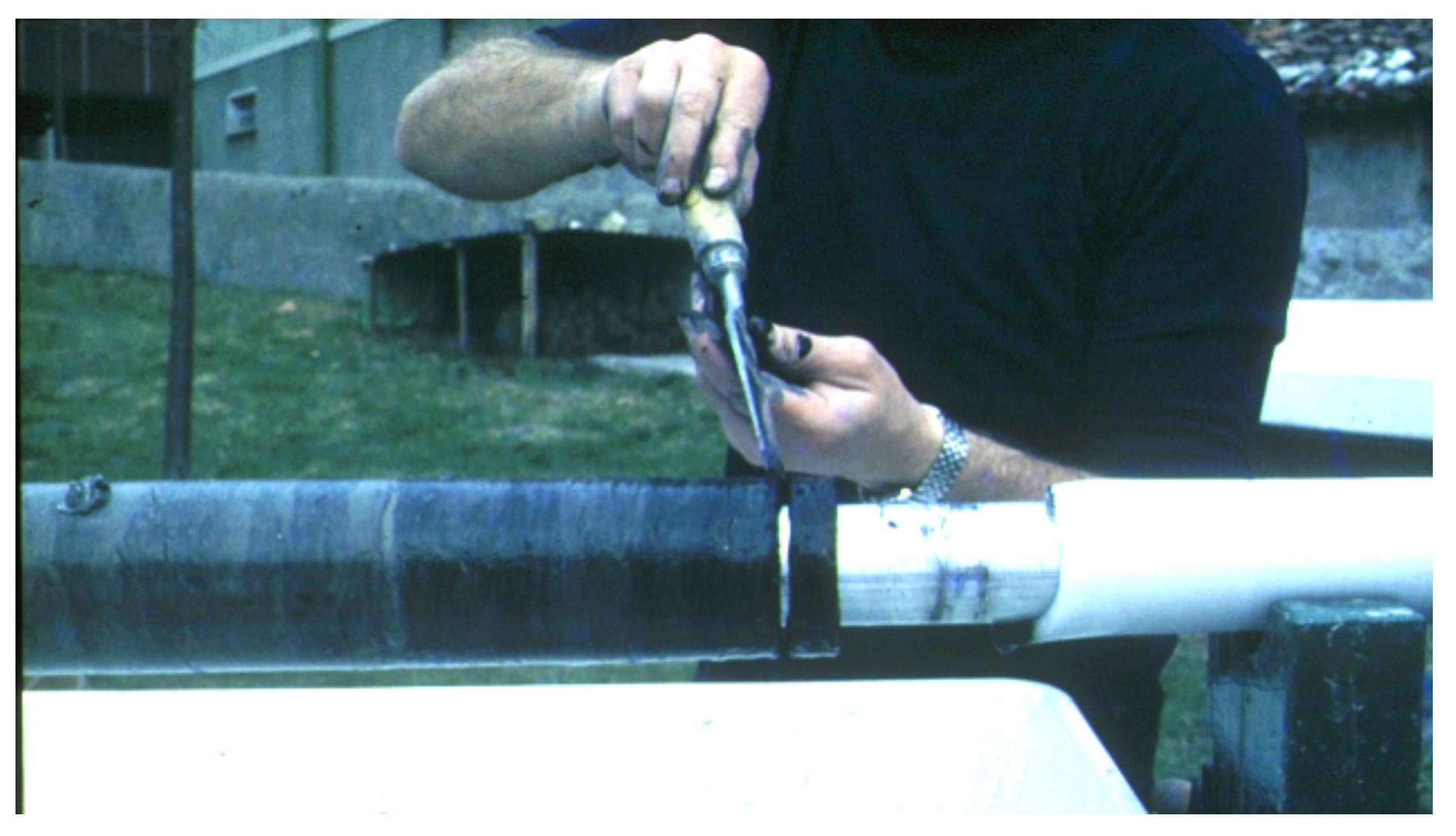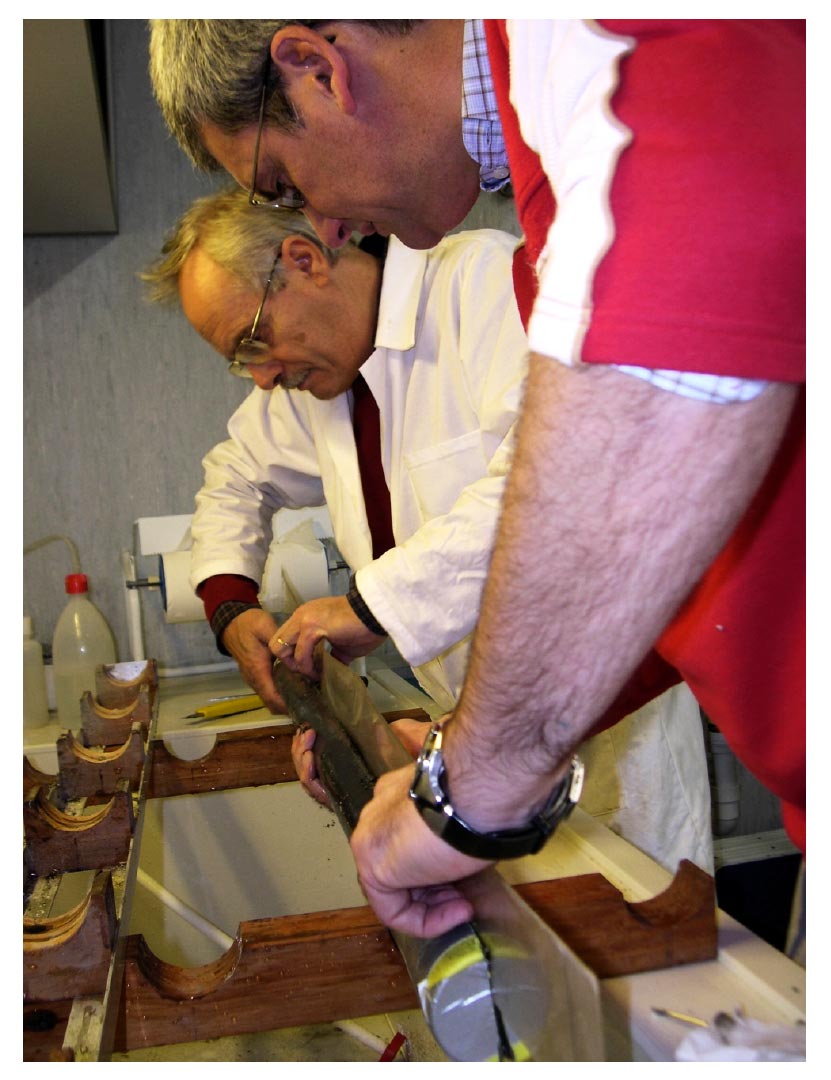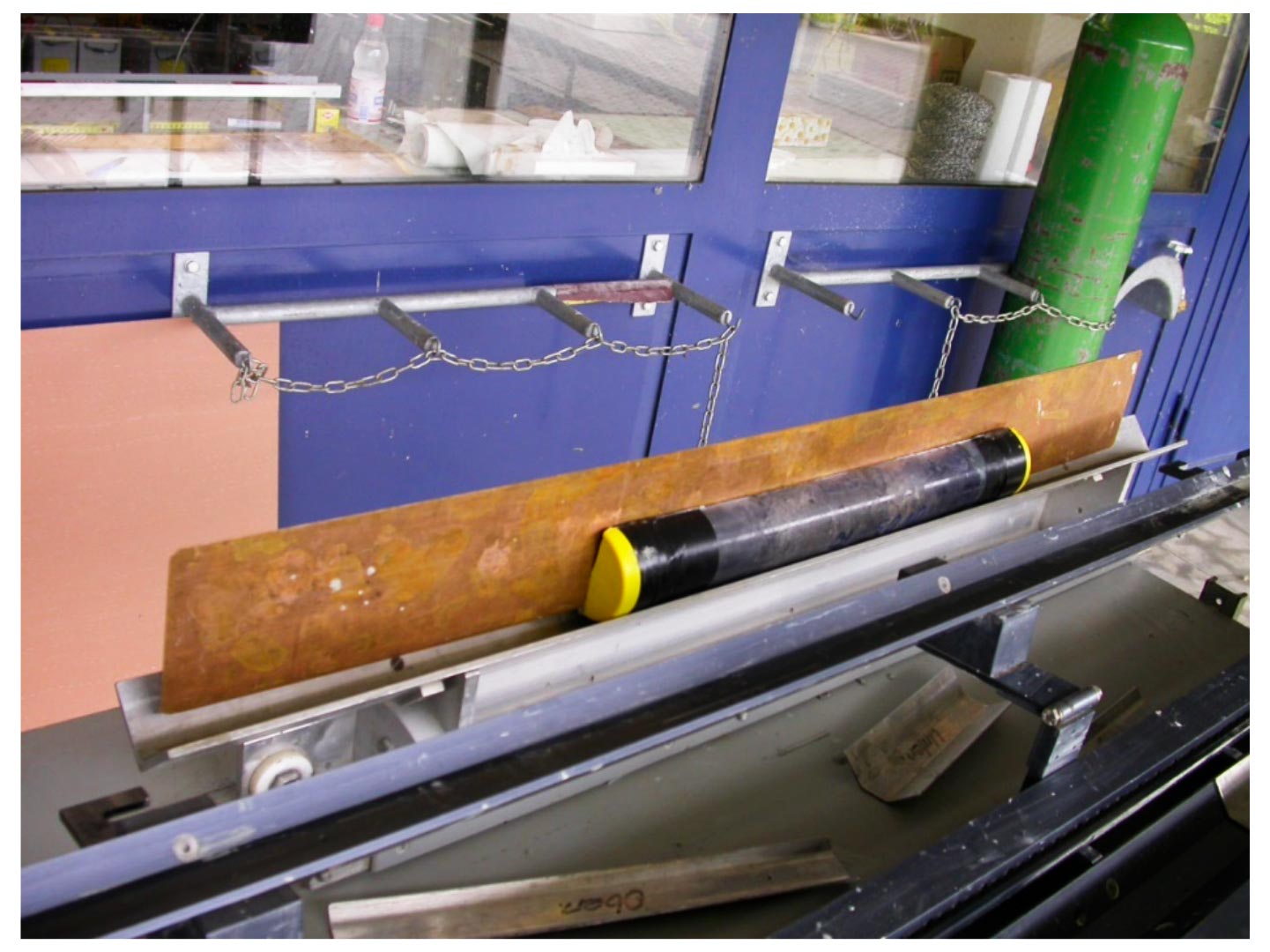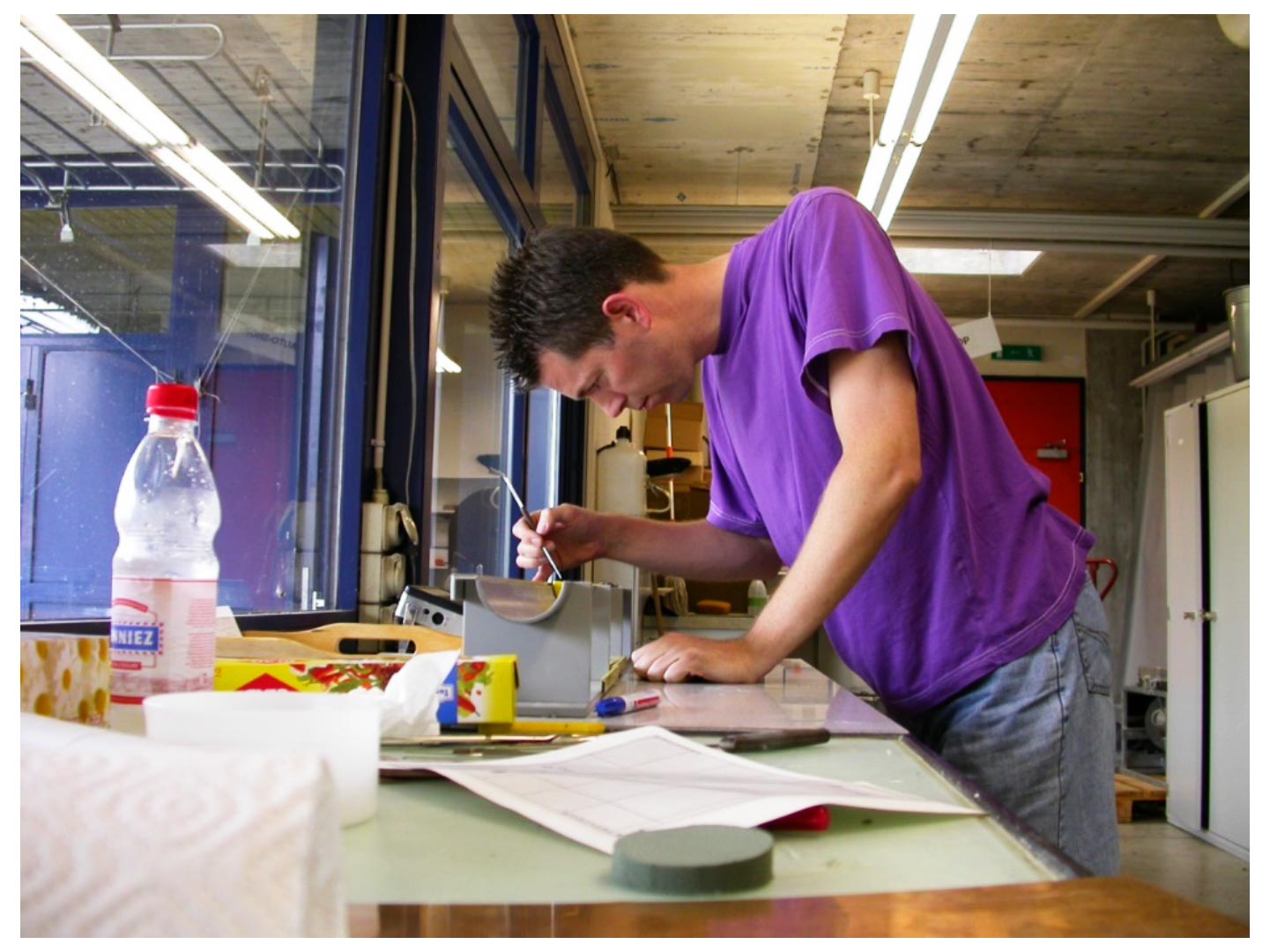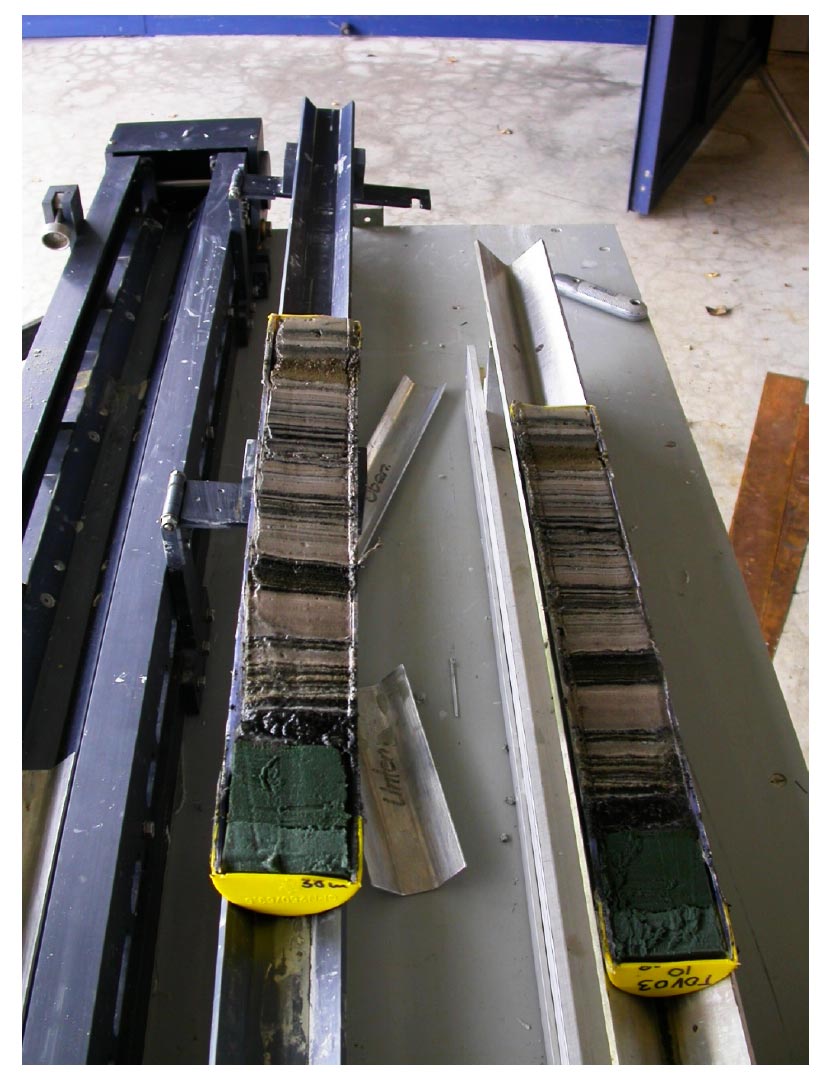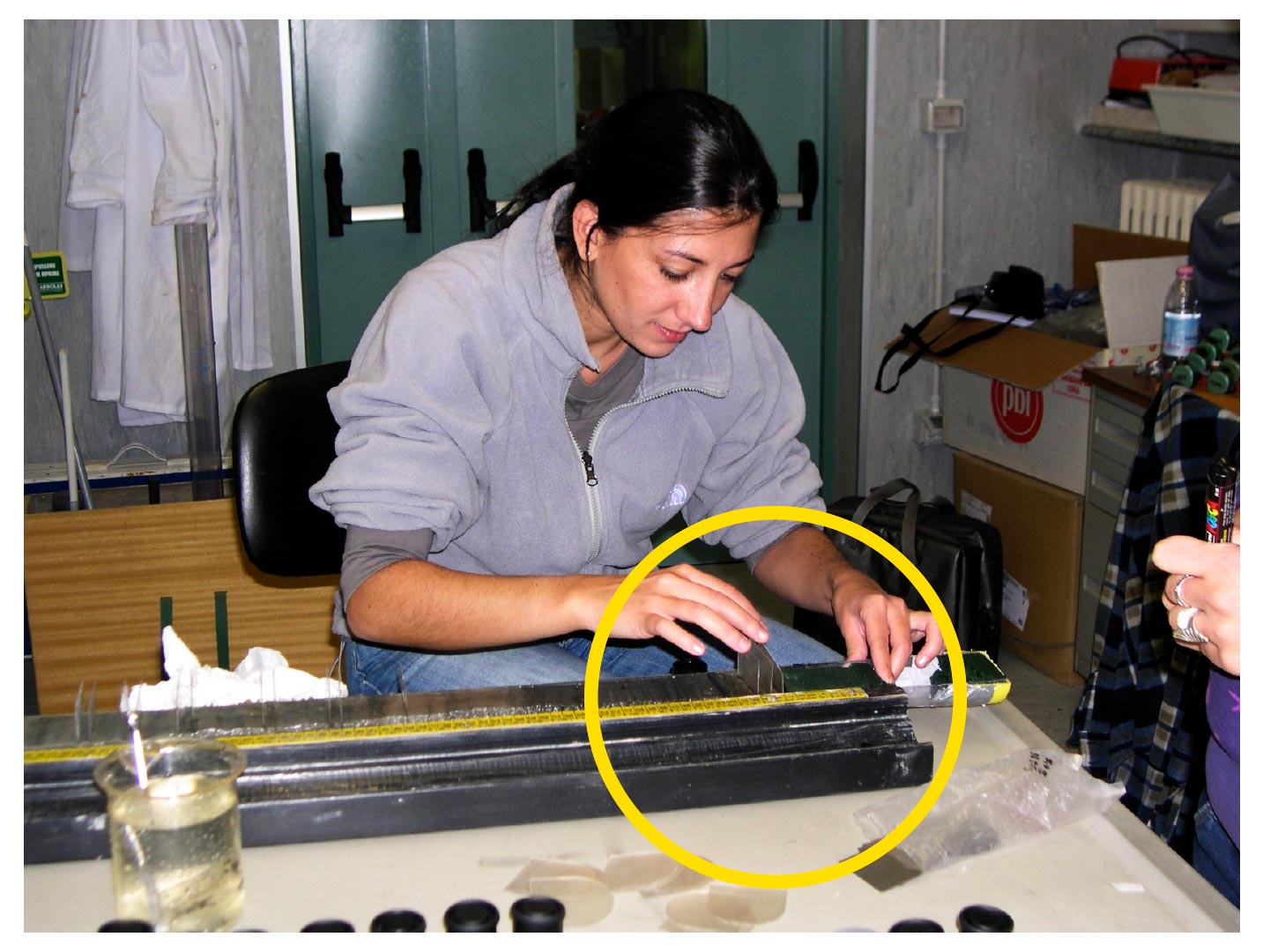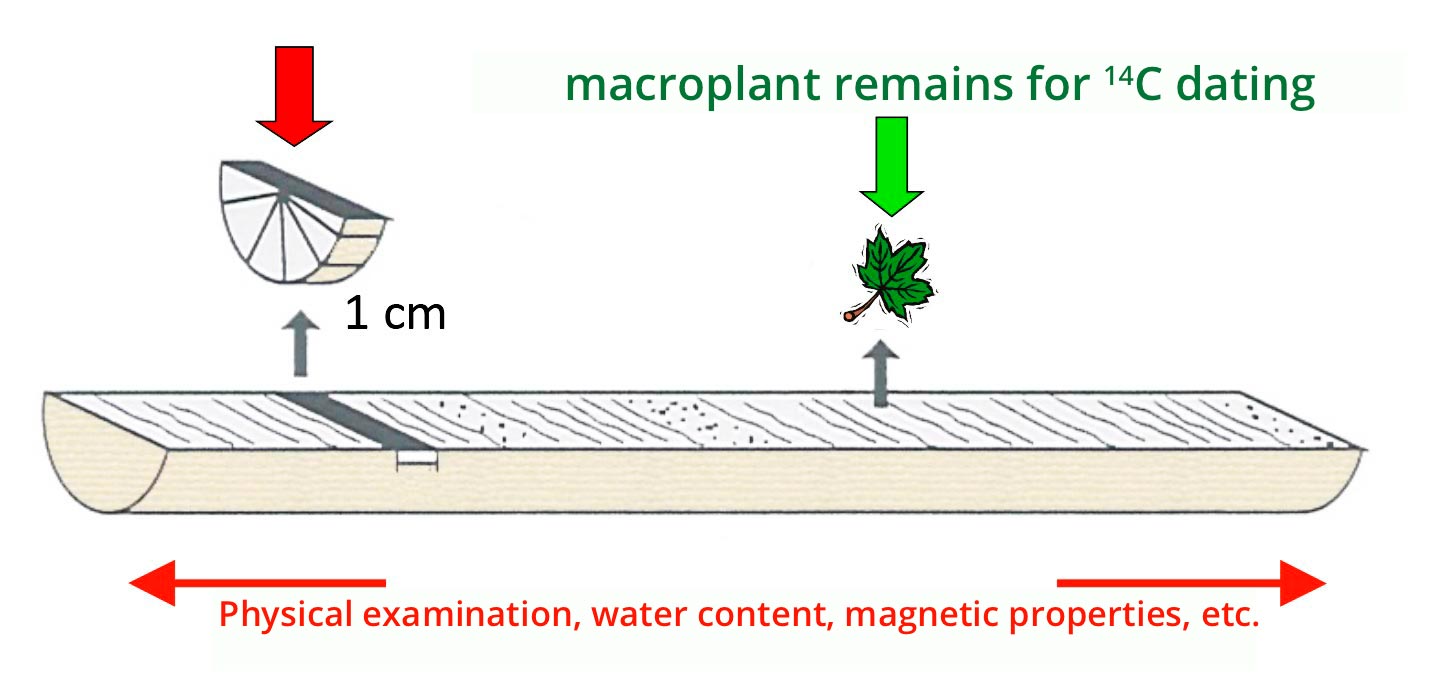

Paleo
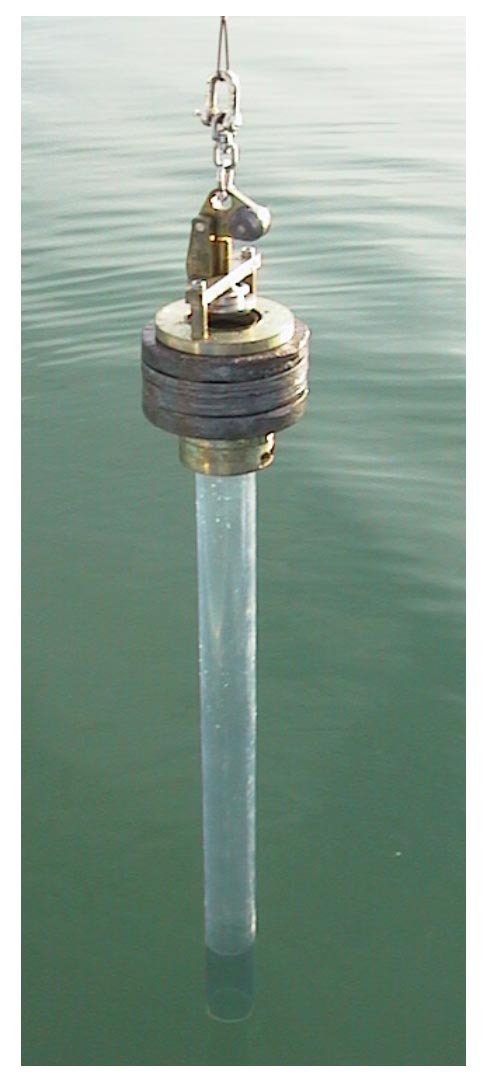
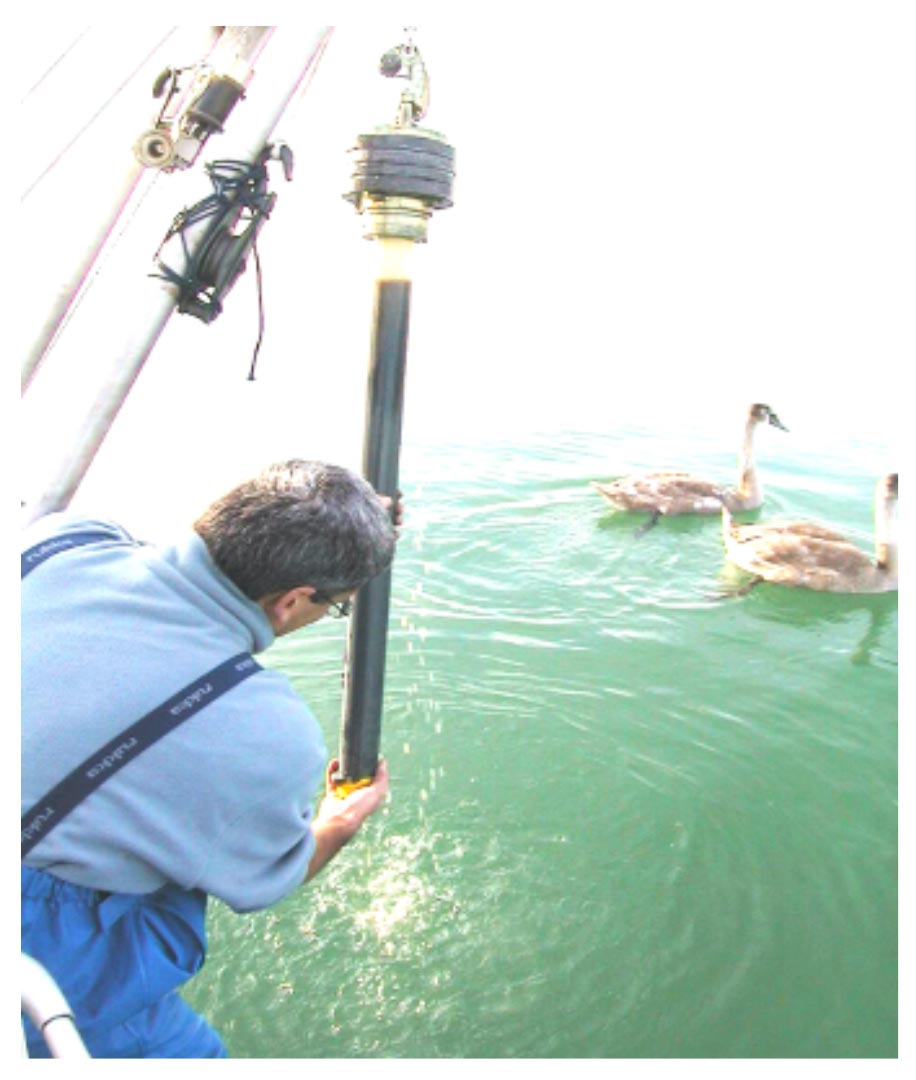
There are several tools used to collect sediments as they have settled over time. They are given the generic name of “corers”, since they extract “sediment cores”. These images show a gravity corer identical to that used by the ETH (Eidgenössische Technische Hochschule, Swiss Federal Institute of Technology) in Zurich. The core tube just brought to the surface is closed at the base with a plastic cap and subsequently hoisted into the boat. With this corer it is possible to take cores of about 100-150 cm in length; the diameter of the tube is 6.3 cm.
Gravity corer
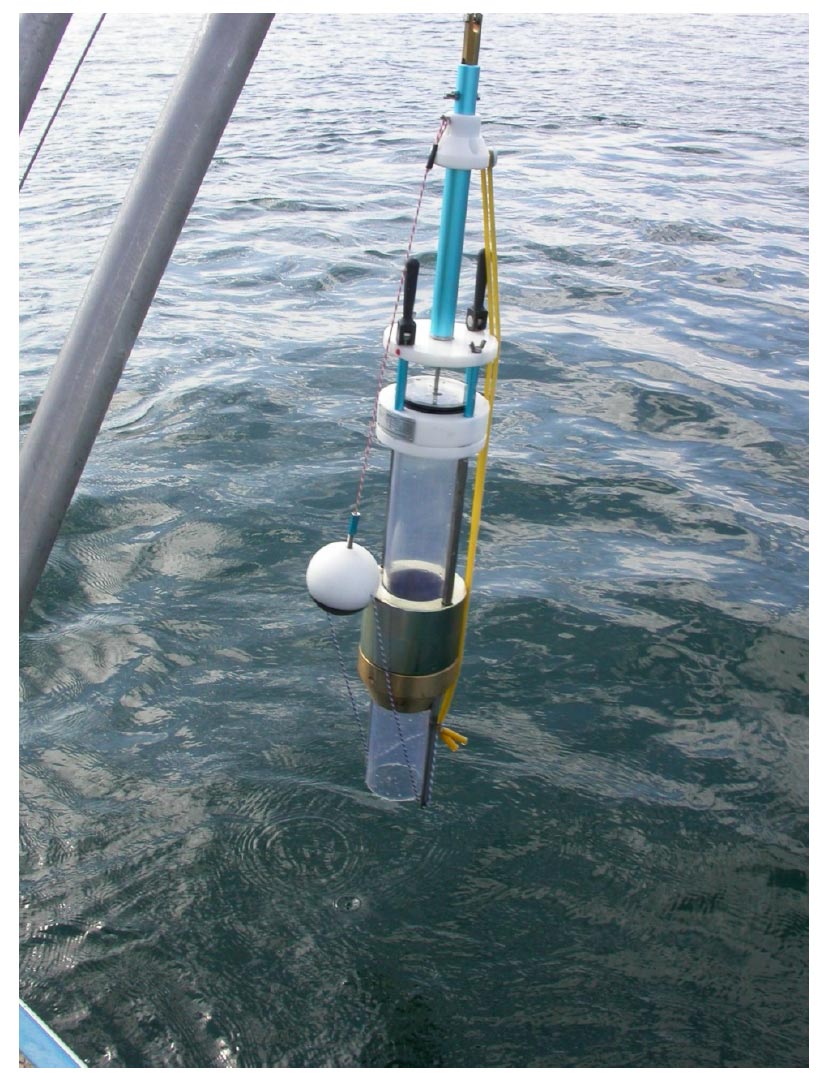
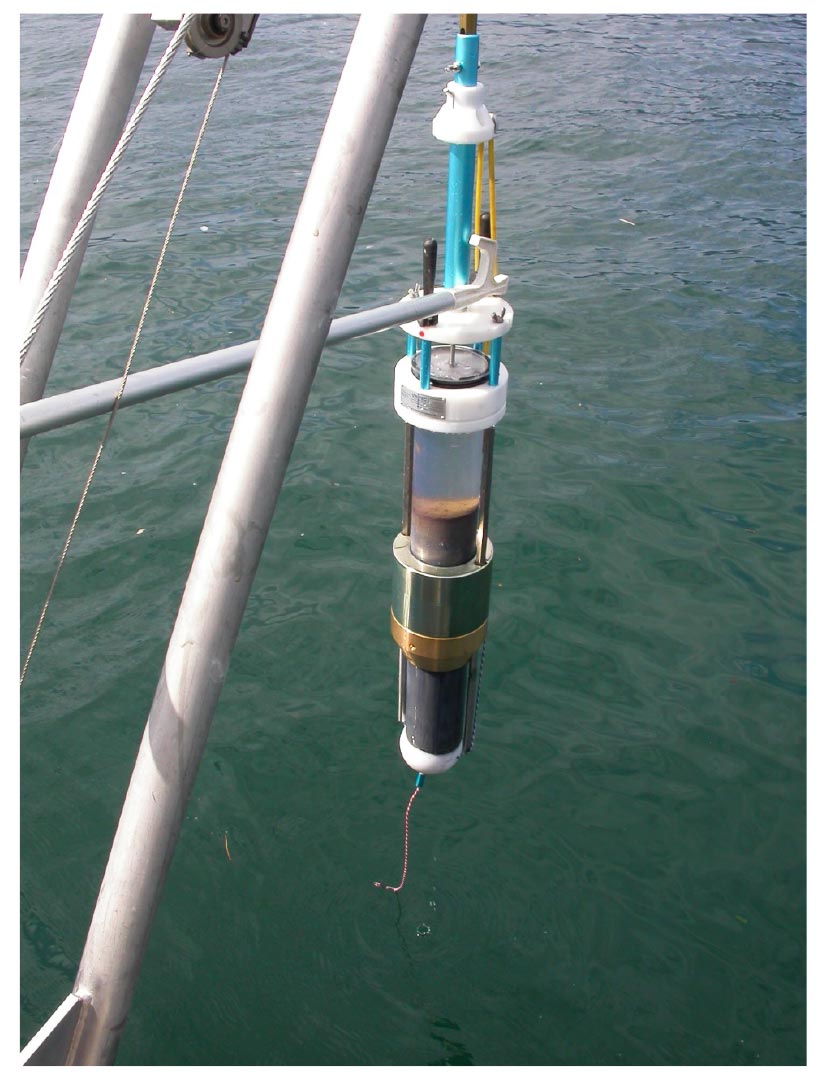
Some gravity cores provide automatic closure at the base of the tube with a plastic ball (white in the photo).
The LIMNOS “ ring corer”
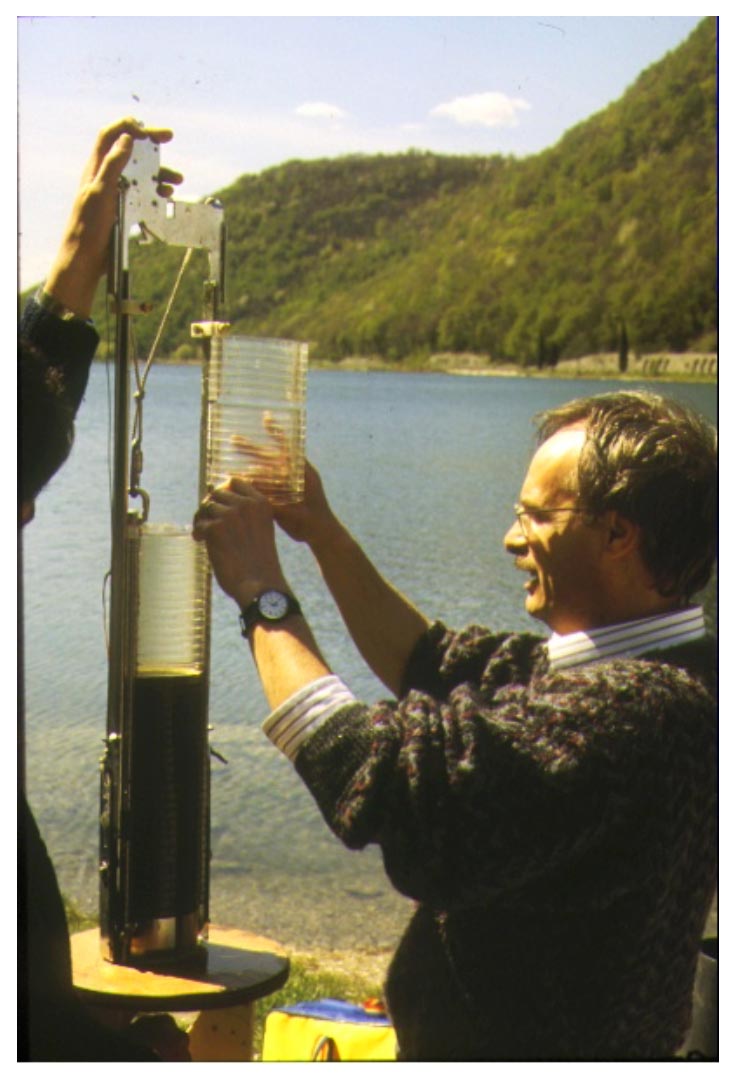
The LIMNOS “ ring corer” has 10 cm diameter plastic sampling tube already prepared for sub-sampling sections 1 cm thick.
Sub-sampling operation with LIMNOS sampler
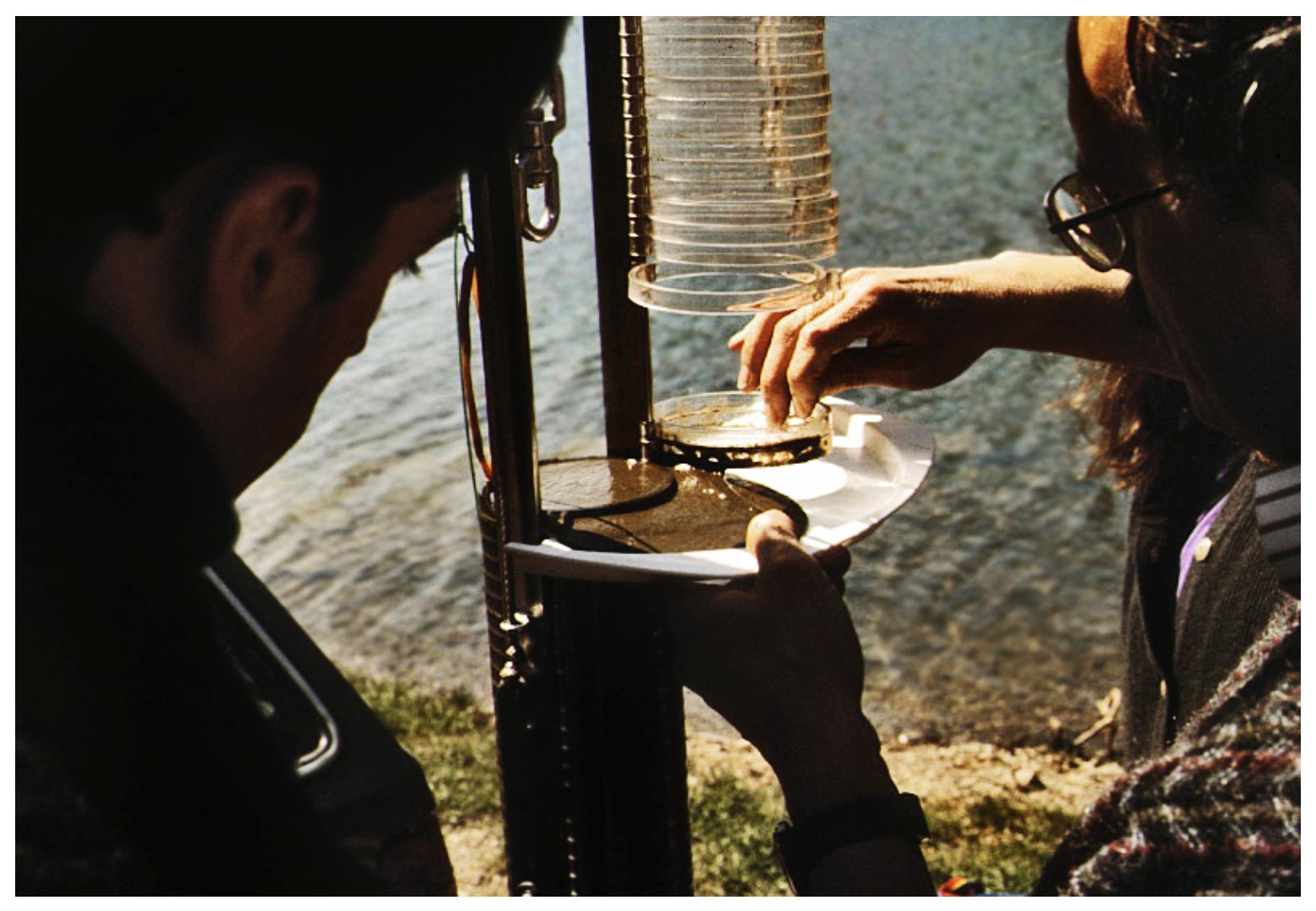
The photo shows the sub-sampling operation with LIMNOS sampler.
Freeze corer
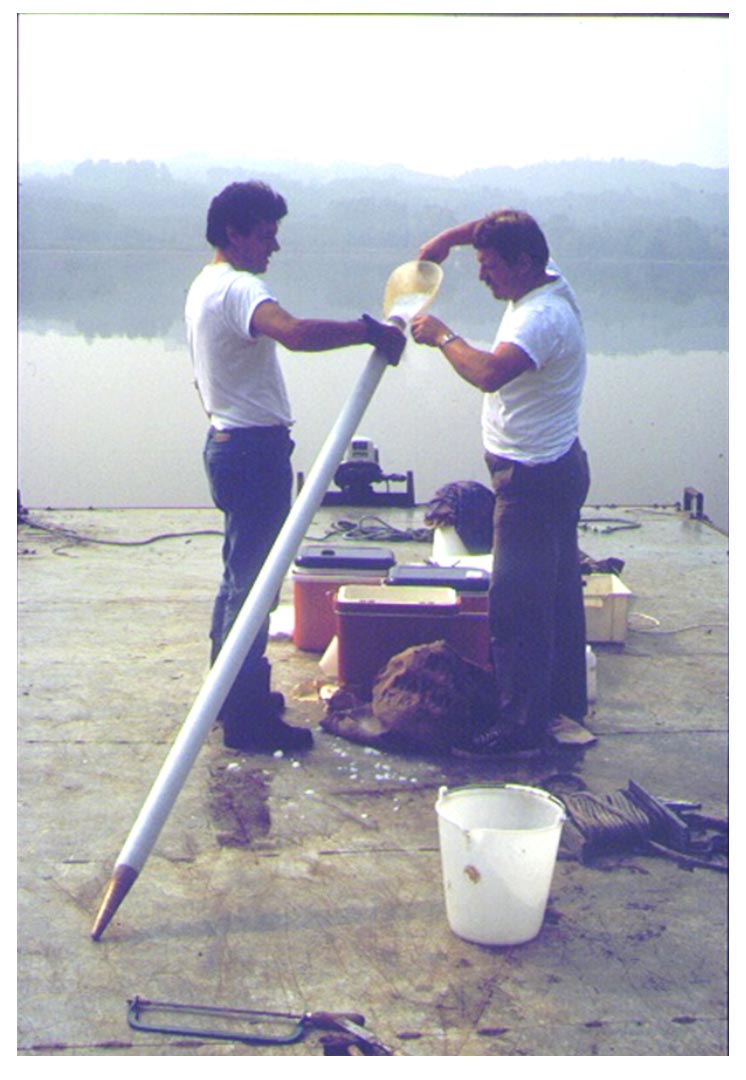

Particularly valid is the freeze corer: the aluminum tube, filled with dry ice (the solid form of carbon dioxide; Temperature = approx. -78 °C), will extract a frozen sediment core on the external surface of the tube. This will bring into view the sediment layers almost undisturbed.
Sub-sampling
The frozen core is sectioned with a carpenter’s hacksaw and chisel.
Lake Albano floating platforms
PROJECT PALICLAS Platform
For the retrieval of long cores it is necessary to set up floating platforms. The photo shows the special ETH platform used for sampling cores about 15 m long in Lake Albano during the EU PALICLAS Project (Paleoenvironmental Analysis of Italian Crater Lakes and Adriatic Sediments) Project.
Paleo in the lab
Core cut lengthwise
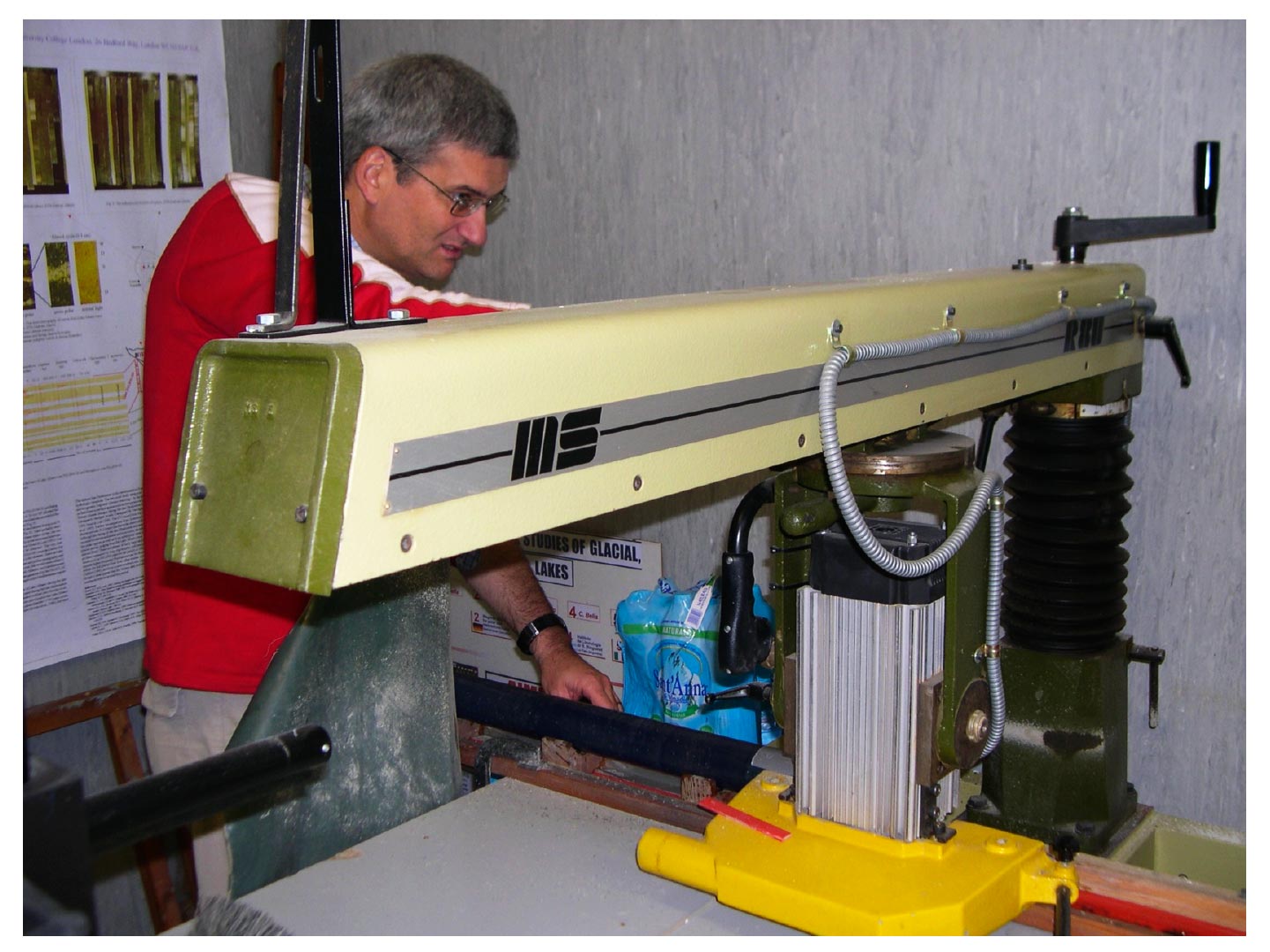
Cores extracted with the most common corers are cut lengthwise.
Separation
Inspection of the internal structure
And a first visual inspection of the internal structure is carried out. In the figure the researcher Thomas Kulbe (EAWAG, Dübendorf, CH) struggling with a core from Lake Tovel. The open core is shown in the photo on the right.
Sub-sampling of core
The subsequent sub-sampling of sections of different thickness will allow the reconstruction of the different periods of the lake’s evolution, from the most recent to the oldest, even prior to the appearance of Homo sapiens. The photo shows Dr. Sara Bovio, while sub-sampling during her work as a research fellow at the Pallanza Institute.
Longitudinal section of a sediment core
This drawing shows which preliminary analyzes are usually carried out on individual sediment sections. The analyzes include, for example, the determination of physical properties, the content in water, the percentage of organic substances, the concentration of pigments, nutrients and organic compounds, the analysis of pollen and diatom “shells”.

